The federal Office of Science and Technology Policy has announced a request for public input on the impact that the Select Agent Regulations have had on science, technology, and national security, and on the benefits, costs, and limitations of these regulations.
Select Agent Regulations address the possession, use, and transfer of biological select agents and toxins—those agents and toxins that have been determined by the Secretary of Health and Human Services (HHS) or the Secretary of Agriculture as having the potential to pose a severe threat to public, animal or plant health or to animal or plant products. It is important that biological select agents and toxins are regulated in a way that effectively allows for research and development to enhance science, health, and national security.
Drawing on these comments and other information available to it, a Fast Track Action Committee under the Committee on Homeland and National Security of the National Science and Technology Council will review the impacts and consider options to address the identified challenges or gaps concerning those regulations.
Specific questions for consideration include:
- What are the specific benefits, challenges, and impacts in implementing the SAR with respect to: Scientific research; safety and security; and public or agricultural health and response?
- What gaps exist in the SAR (e.g., reporting, aggregated data collection, ability to transfer material across international borders) and what specific recommendations would fill those gaps?
- Are facilities that possess, use, or transfer biological select agents and toxins in the U.S. safer than they were before the SAR went into effect in close to its current form in 2003? If so, to what extent are the SAR responsible?
- The SAR strike a balance between avoiding harm (e.g., preventing safety or security lapses) and seeking benefits (e.g., conducting research and public or agricultural health activities). Do you think that balance has been struck appropriately? If not, what specific aspects of the SAR should be emphasized more, and what should be emphasized less?
- Have the regulations unduly impaired research and other applications of select agents and toxins? If so, how?
- If the SAR have unduly impaired research, how can the research and other applications be further promoted, while still protecting against misuse and accidental release?
- Have the regulations sufficiently protected public and agricultural health and safety against the misuse and accidental release of these agents?
- If the SAR are not sufficient for health and safety protection, how can health and safety be better protected while still facilitating legitimate use of select agents and toxins?
- Describe how the overall costs of the SAR are or are not appropriately balanced with their overall benefits.
- The SAR regulate the use, transfer, or possession of a specific list of potentially dangerous pathogens and toxins. Is designing the regulations around a list of agents advantageous or disadvantageous? If disadvantageous, in what other way can the regulations be organized and implemented?
- Research today is a thoroughly international activity, with scientists and research materials constantly crossing national borders. Security threats today likewise extend across national borders. Are the SAR appropriately configured to accommodate these international issues? If not, how could they be improved?
- Are the SAR appropriately configured to accommodate changes in science and technology such as, but not limited to, advances in synthetic biology, genetic engineering, or viral systematics? What scientific and technical advances might improve the function or lessen the costs and burdens of the SAR?
Comments of up to three pages or fewer are requested and must be received by March 30, 2015 to be considered. Further details are available via the Federal Register.


